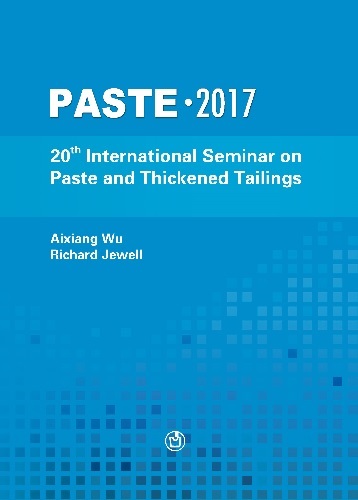An examination of improvements in co-disposal of waste rock with backfill

|
Authors: Lee, C; Gu, F |
DOI https://doi.org/10.36487/ACG_rep/1752_37_Lee
Cite As:
Lee, C & Gu, F 2017, 'An examination of improvements in co-disposal of waste rock with backfill', in A Wu & R Jewell (eds), Paste 2017: Proceedings of the 20th International Seminar on Paste and Thickened Tailings, University of Science and Technology Beijing, Beijing, pp. 338-345, https://doi.org/10.36487/ACG_rep/1752_37_Lee
Abstract:
Most underground mines produce a significant quantity of development waste rock in order to access the orebody and provide underground excavations for mining infrastructure. Much of this development waste rock is hauled to surface in many mines and results in a substantial operating cost. In addition, most mines use cemented backfill to fill the stope voids that are not filled with waste rock and this cemented backfill represents a substantial operating cost as well. Some mines do dispose of some development waste rock in stopes however the operational difficulties associated with disposing of a large quantity of rock in the stopes prevents many mines from taking advantage of this option. One of the principal difficulties is the placement of backfill and waste rock in the right proportions so that there are no areas of waste rock only (i.e. rock that has no binding matrix to hold the rock particles together). Traditional methods of waste rock disposal in backfill stopes using scoops that dump their buckets over the brow have been severely limited by this constraint and resulted in limitations on the rate of waste rock delivery into the stope as well as the maximum amount of rock that can be placed into the stope. Delivery of waste rock from the development face to the stope can also be challenging if the distance is substantial. Scheduling of the development waste rock disposal in the available stopes can be difficult since the options for waste rock storage are typically limited on an active mining level and the peaks in development rock production may exceed the capacity of a stope to receive development waste rock. This paper discusses procedures, methods and equipment that can be used to allow waste rock to be delivered more effectively to the stopes to lower a mines operating costs.
References:
Kuganathan K., Sheppard I. 2001, ‘A non-segregating 'Rocky Paste Fill' (RPF) produced by co-disposal of cemented de-slimed tailings slurry and graded rockfill’, Minefill 2001: 7th International Symposium on Mining with Backfill 2001, pp. 27-41.
© Copyright 2026, Australian Centre for Geomechanics (ACG), The University of Western Australia. All rights reserved.
View copyright/legal information
Please direct any queries or error reports to repository-acg@uwa.edu.au
View copyright/legal information
Please direct any queries or error reports to repository-acg@uwa.edu.au